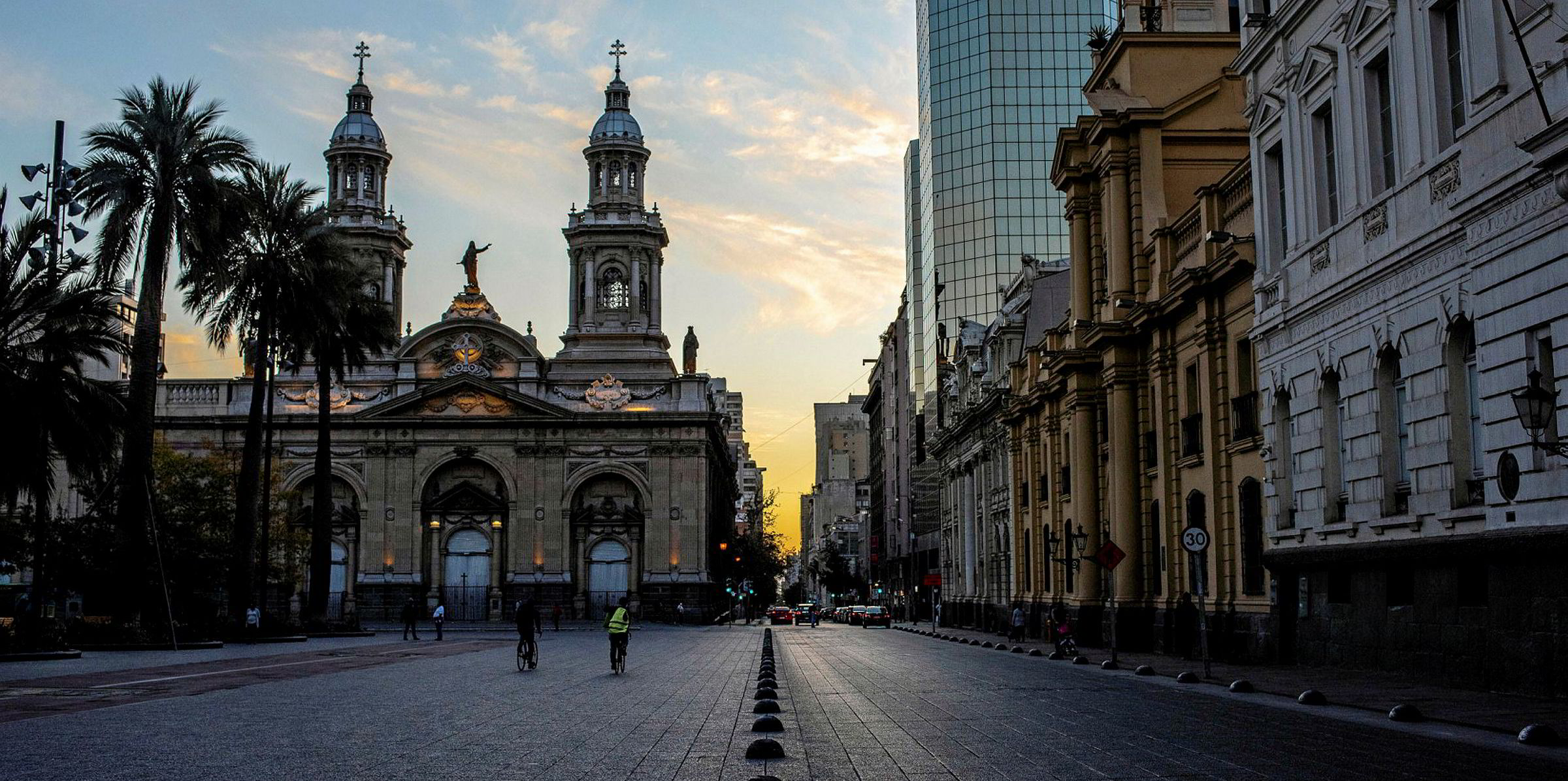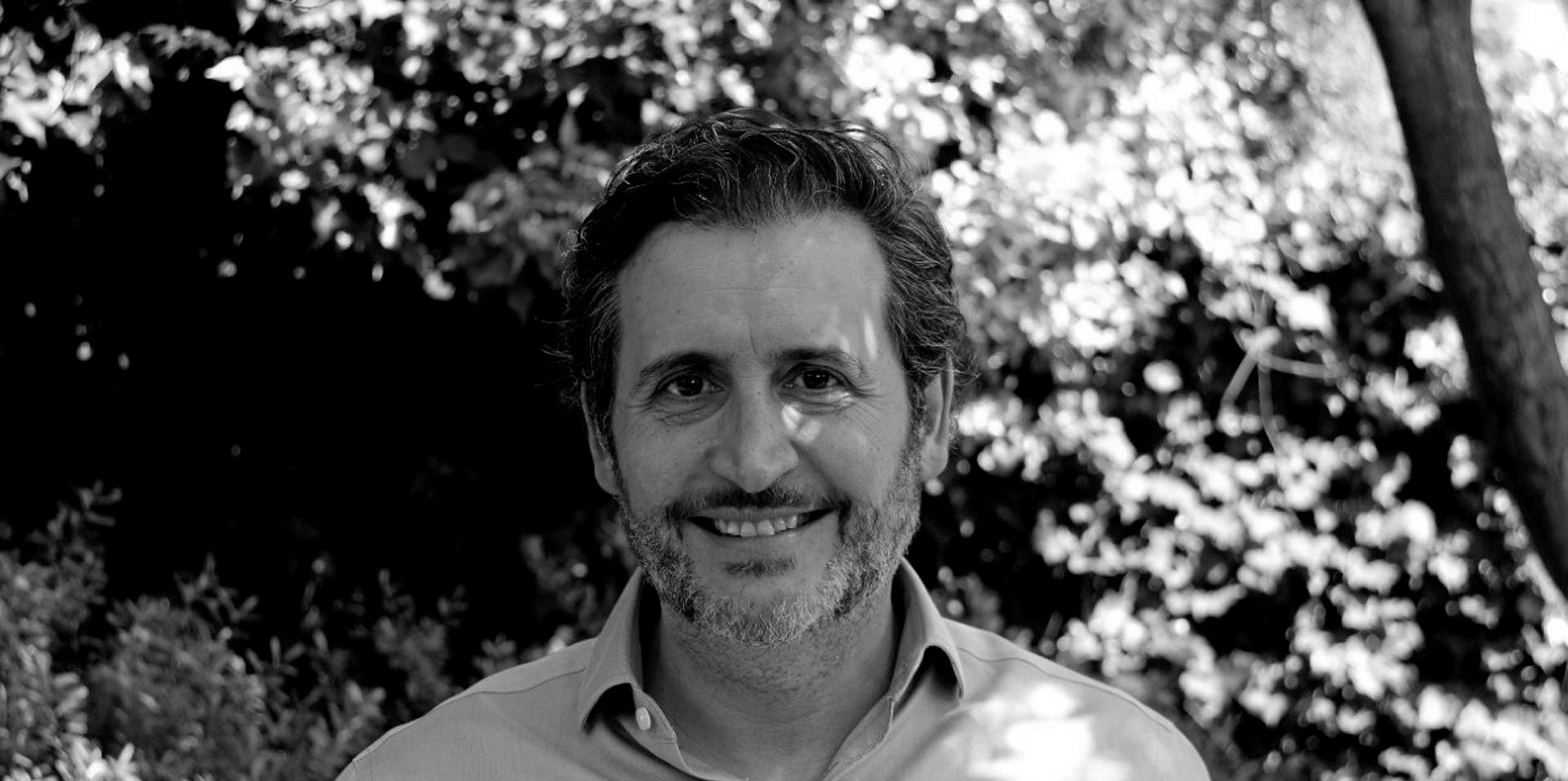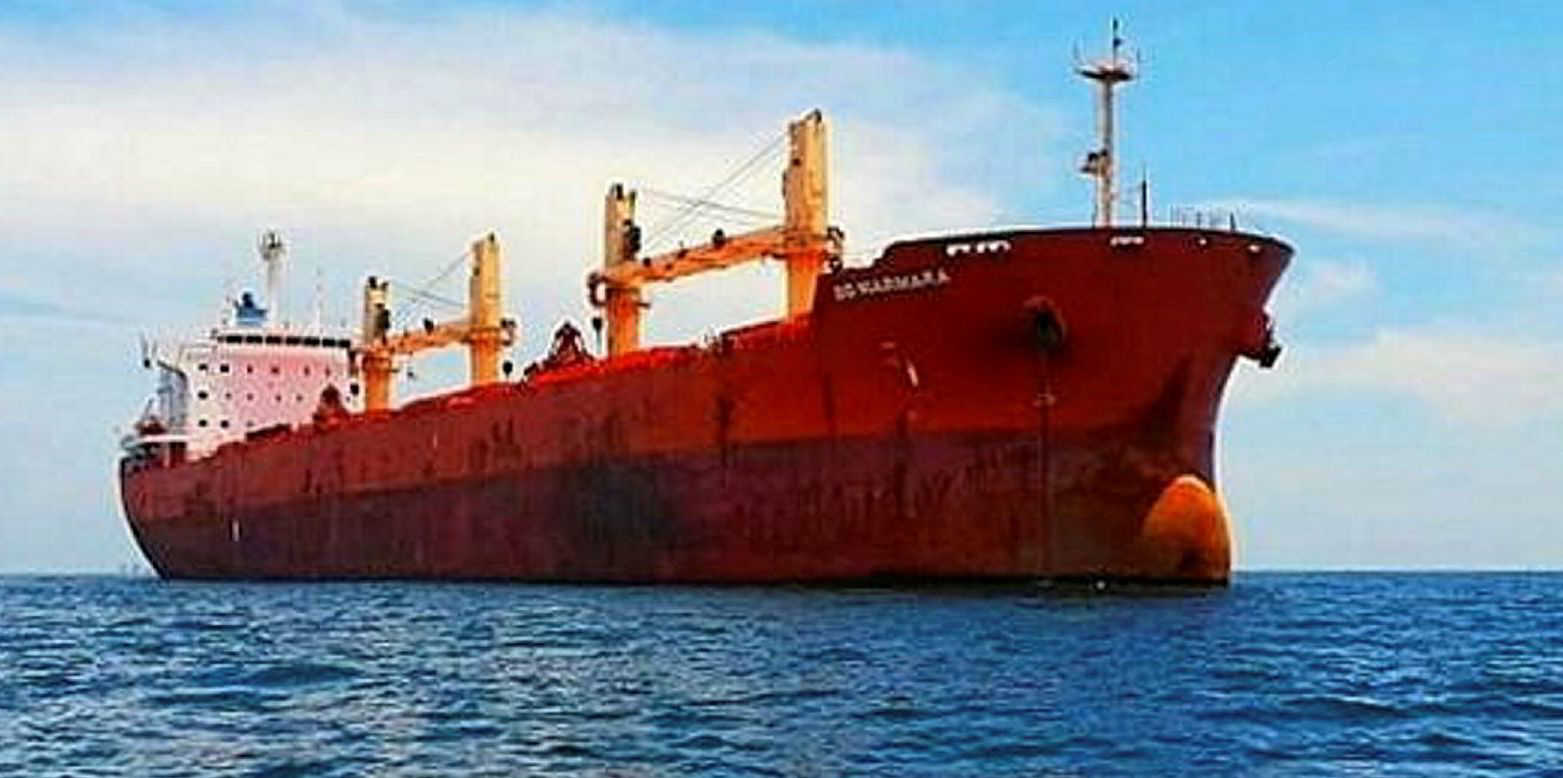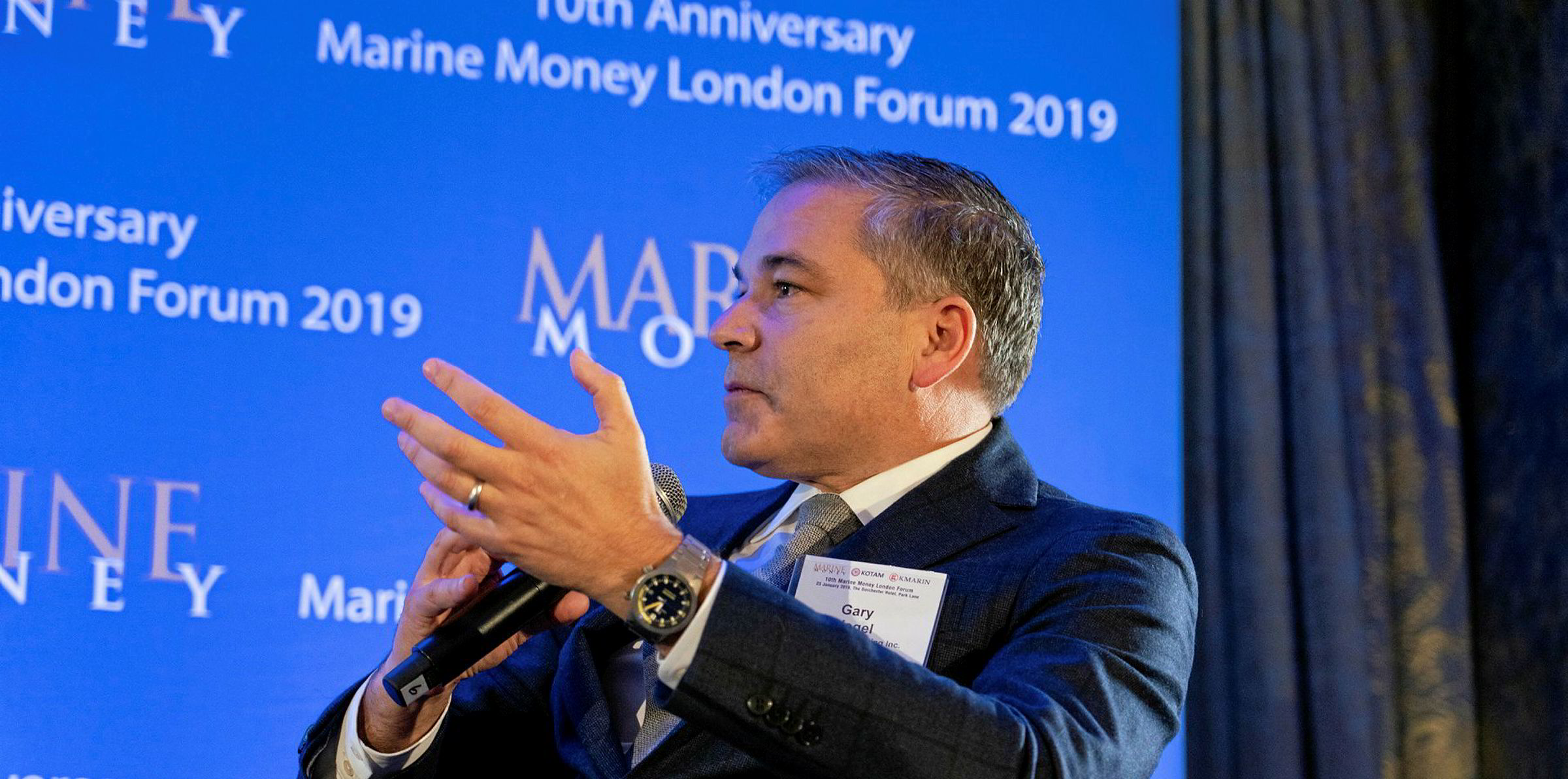Santiago-based bulker operator Nachipa is gearing up for a big fleet expansion as it looks to capture a larger slice of the European market.
The low-profile Chilean company has been moving to a cargo-first approach in recent years, reducing its owned tonnage in pursuit of an "asset-light" model with a more modern chartered-in fleet, while expanding global operations.
Nachipa has just opened its first European office in the German city of Hamburg and is also plotting an Asian base.
"We've been around for 70 years and three years ago we decided to put a bomb under the company everybody knew and redefine ourselves basically," chief executive Felipe Simian told TradeWinds.
The boss is the third generation of his family to control Nachipa since it was formed in 1948.
Simian said the best example he could give as a reason for the new strategy is the Covid-19 situation.
“This year was supposed to be fantastic,” he said. “We were only supposed to be facing the IMO 2020 thing.
“The whole industry was preparing itself for super-expensive bunkers and, after three months, bunkers went negative, so I think the only way to stay healthy in this industry is to be able to react accordingly.
“Because of the highly speculative nature of shipping and the increasing demands of clients who work with us, you can’t invest all your equity in only one vessel. You need to be flexible and see what the clients need and move from one size to another.
"The 28,000-dwt size was the benchmark; now in handysizes it's 38,000 dwt. You need to move quickly, and I think the only way to do it is to remain flexible."
The asset-light strategy is increasingly favoured by European bulker owners such as Norden and Clipper.
Fleet set to expand
Nachipa has pledged to treble its fleet of 12 handysizes by 2023, moving up to modern supramaxes and ultramaxes, supported by a data-driven approach to decision-making.
The company, which carries 3m tonnes of cargo each year, has 10 vessels fixed on mid or long-term contracts, with another two to four ships operating spot at any one time.
Formed: 1948 in Chile
First ship: 300-dwt unit
Ownership: Still family owned
Fleet: 12 handysizes
Leadership: Chief executive is third-generation owner Felipe Simian
Offices: Santiago and Hamburg
Cargo: 3m tonnes carried per year
“I think that our asset-light approach comes from our DNA right now,” Simian said. “We have a cargo approach and not a steel approach.
“With a cargo approach, you need to have a bigger fleet and a bigger presence, and the only way to do that is to be able to get in and out in a proper way, so that you don’t expose the company that much.”
Nachipa's owned fleet has been reduced in recent years. UK broker Clarksons lists its only owned ship as the 29,800-dwt Alerce N (built 2001), which was reportedly acquired for $10m in 2012.
'We'd rather charter vessels'
“You need to look in the mirror and ask, do we have the advantages to be a family shipowner? And we said no,” Simian said. “We’d rather charter vessels and we have been able to renew our controlled fleet on that basis — and that means a lot to us.
“We were usually a company associated with owning old tonnage. We were steel-orientated and we had an in-house shipmanagement branch, and we said ‘no, we can’t keep up with this if we want modern tonnage, it’s getting too expensive to have an in-house fleet, so we have to move forward’.
"It's been quite challenging, but we're here."

The chartered-in bulkers are owned by companies such as Navios Group, Interlink Maritime, Noma Shipping, Denholm Shipping and Wisdom Marine, and are built between 2001 and 2020.
“We have a fantastic relationship with owners,” Simian said. “We’re on their list when we both agree we can take a vessel from them.”
German ground gained
The new Hamburg office has been launched with a chief commercial officer and a chartering manager.
Simian said the company sees plenty of business opportunities in Europe, “but if you’re not awake in a different time zone, you’re just not there for all the business that’s being handled”.
“The world is more global every day and all of our clients are big companies that have worldwide presence,” he said. “If a chartering manager is trading a vessel in Europe or in the Far East, when you wake up the cargo is not there.”
Nachipa’s plans for an Asian office are described as “mid-term” — and Simian said the base will be located in one of the major shipping hubs.
As for the timing of opening a new office during a pandemic, Simian said: “Some people have told me, ‘Felipe, this is the worst time ever to open an office in Europe’. And I said ‘no, you’re completely wrong because when things are going bad, the only way they can go is up, or good, again’.
Market has to change
"You have to be prepared for that. Shipping is super-unpredictable. The down cycle for bulk carriers has lasted for the last 10 years. This has to change, it's the nature of the business."
Nachipa chief commercial officer Jan-Philipp Rauno said: “Today, our activities are concentrated in the Americas, but our new office in Hamburg places us at the very heart of the European transshipment trade, and brings us closer to our customers and partners as we expand our quality-first strategy globally.”
Despite its long history, Nachipa is not stuck in the past.
“When you’re competing with the big guys, you have to differentiate yourself,” Simian said. “And, for us, being at the forefront of the use of data and information technology is the way to do it.
“People know us, and we believe in collaboration with clients and brokers, in building a unique and long-lasting relationship.
Relationships are the key
“This is not a faceless numbers business. We believe that with relationships, when they are clear, direct and transparent, you connect and you are able to provide a very good solution for your clients.”
Nachipa is looking at the bigger vessel sizes to meet demand from charterers.
Simian said: "For example, we have a lot of presence in South America, in the grains, in the River Plate.
“Most charterers at the beginning were only trading within handymax vessel sizes, but parcels get big, it’s 45,000 tonnes now. You have to be able to give them a number, otherwise you’re out.
“The bigger the vessel, the lower the tariff — they will prefer that [bigger size].”
Asked whether a stock listing could be on the cards, Simian responded: "What is our purpose in life as a shipping company? Why do we come to the office every day?
“Our big purpose is to do things great. We’d rather be great before big. If we do things right then resources will come eventually.
No IPO on the horizon
“At some point, if our growth strategy succeeds, we think we will have to have more resources. A stock listing is always there, it’s somewhere you might want to go.”
Nachipa believes now is the time to tell its new story.
“We have always been very low profile,” Simian said. “It’s a very old business. We have been, for most of our life, a very niche company.
"At some point, necessities change and your clients need different things from you. If we want to provide more solutions, we need to have a voice; it’s important that people know us, and understand we’re not the new kids on the block.
"We've actually been around for ever, and we're the most serious guys you can get in the business. Nachipa has always delivered.
"We're a very serious business partner and we're here for the long run."








